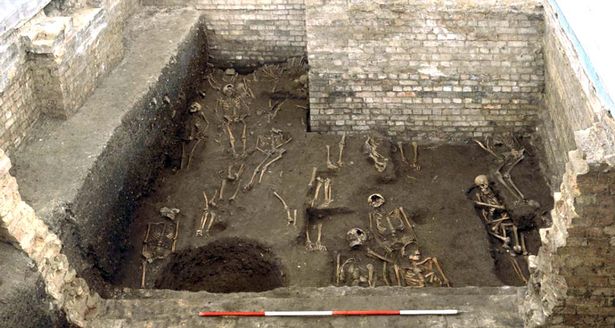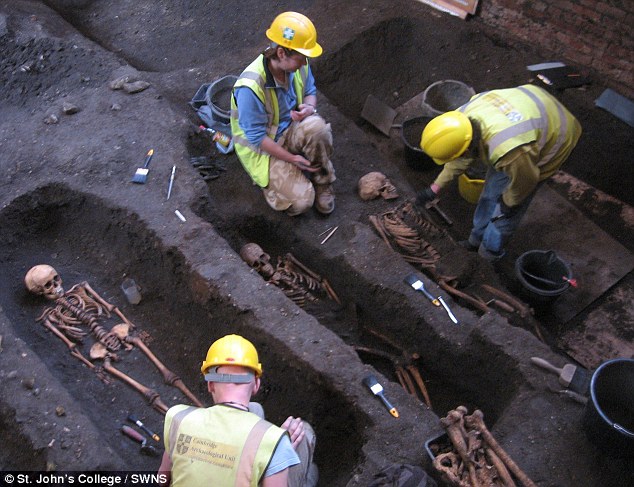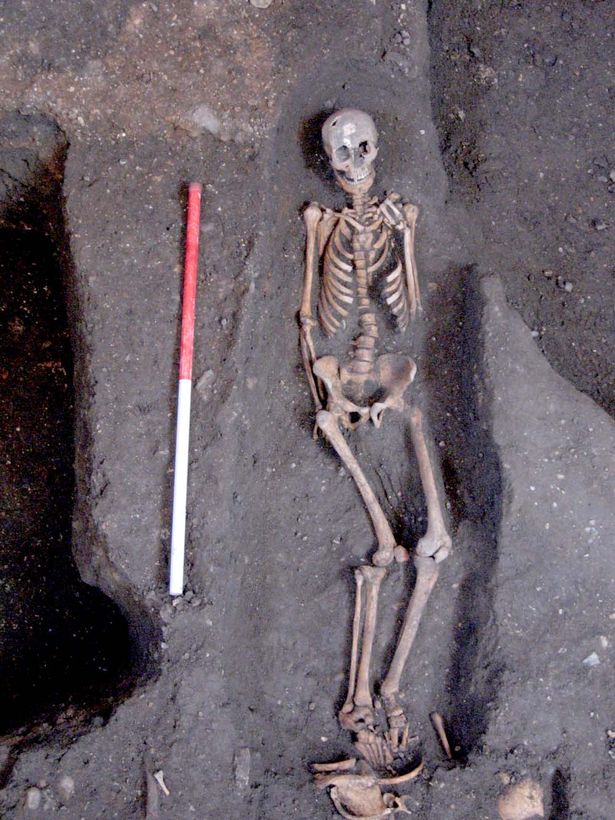University of Cambridge: Remains of 1,300 scholars are found under a building
Some were sickly Cambridge University scholars, other homeless wayfarers or simply the infirm.
Having fallen on hard times, and being too poor to care for themselves, they all ended up receiving spiritual succour during their last days in the medieval Hospital of St John the Evangelist, set up in 1195.
After they died they were buried in the hospital’s own cemetery whose exact site and scale was a mystery for centuries – until a lecture hall belonging to a Cambridge college needed refurbishing.
To their amazement, archaeologists digging under the Old Divinity School – a Victorian building owned by St John’s College, which was founded in 1511 on the site of the hospital and which takes its name from it – unearthed the cemetery and the remains of 1,300 people.
Details and photographs of the eerie find are made public for the first time.

Experts said it is one of the largest medieval hospital cemeteries ever discovered in Britain and, with on-going DNA analysis of the remains, will help to cast fresh light on life and death in medieval times.
The archaeologists broke out the floors of the Old Divinity School and the team of 20 dug down inside each room.
In a six-month dig, they found some 400 almost perfectly preserved human skeletons and the partial remains of up to 900 more, all dating from the 13th to 15th centuries.

Craig Cessford, of the Cambridge Archaeological Unit, said: ‘It was known that the cemetery was in that area, but we didn’t know for definite it was where we were working.
‘It was quite amazing to find.’ Most of the skeletons are of 25 to 45-year-old men. The hospital was run by Augustinian monks, and pregnant women were excluded.
Mr Cessford, 45, said the skeletons were buried in neat rows and once the cemetery was full, more were buried on top.

The names of the dead are a mystery, but the cemetery was found to have had gravel paths, suggesting that people visited their deceased loved ones.
The bodies did not exhibit many serious illnesses and conditions.
The Archaeological Journal, which reports on the findings in its latest issue, says this reflects how medieval hospitals’ main role was ‘spiritual and physical care of the poor and infirm rather than medical treatment of the sick and injured’.





